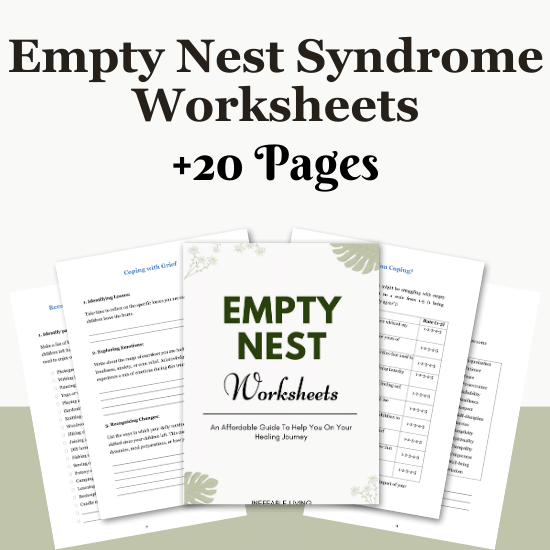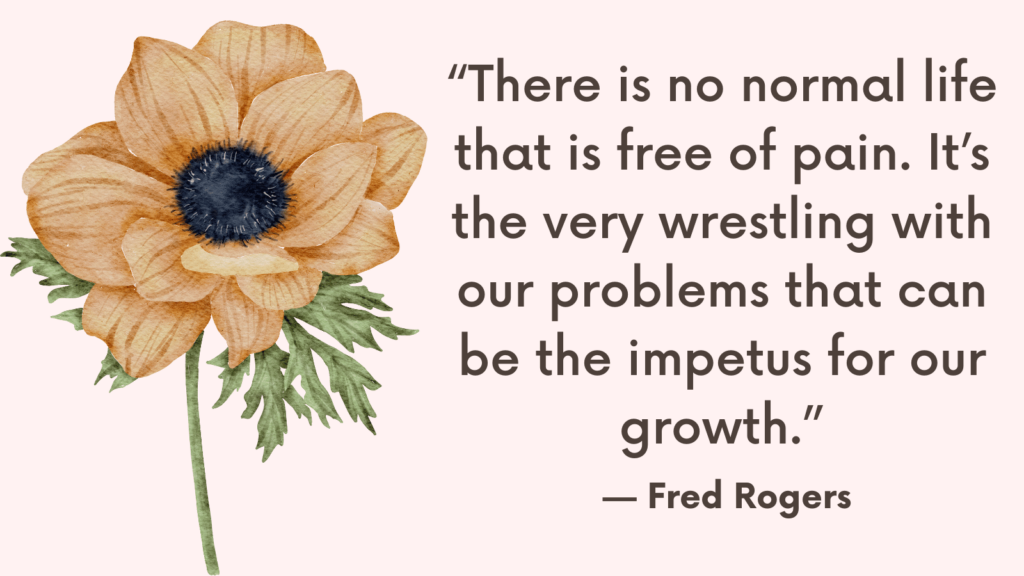In this post, you’re going to learn how to rebuild your life after death of spouse.
The Challenges Associated With Rebuilding One’s Life After The Death Of A Spouse
1. Profound Grief and Loss
The death of a spouse often evokes intense grief, characterized by a wide range of emotions such as profound sadness, despair, yearning, anger, guilt, and disbelief.
These emotions can fluctuate unpredictably, contributing to a sense of emotional turmoil and deep sorrow.
2. Identity Reconstruction
The loss of a spouse may prompt a profound reevaluation of one’s identity and roles, particularly in the context of the marital partnership.
Individuals may experience a significant shift in their self-concept and may grapple with questions related to their sense of purpose, personal narrative, and future aspirations.
3. Social Isolation and Loneliness
The absence of a spouse can lead to profound feelings of social isolation and loneliness.
Individuals may encounter challenges in adjusting to life without the companionship, emotional support, and shared experiences that their spouse provided, potentially impacting their social connections and support networks.
Related: Best 21 Grief Journaling Prompts (+FREE Grief Worksheets PDF)
4. Practical and Financial Adjustments
Rebuilding life after the death of a spouse often necessitates grappling with practical responsibilities and financial adjustments.
This may include navigating household duties, managing financial matters, addressing legal considerations, and adapting to changes in the distribution of responsibilities within the family unit.
5. Emotional Turbulence and Vulnerability
Individuals who have experienced the death of a spouse may be more susceptible to emotional vulnerability, including heightened anxiety, depression, and a sense of existential uncertainty.
Moreover, the bereaved may encounter challenges related to self-compassion and self-care as they navigate the complexities of their grief journey.
6. Navigating Transitions and New Roles
The transition from a married partnership to a single status may involve complex adjustments and the need to reassess one’s roles and responsibilities.
This can encompass emotional, practical, and relational dimensions, posing challenges related to adapting to new life circumstances.
7. Revisiting Past Trauma and Triggers
The death of a spouse can activate past trauma, triggering unresolved emotional wounds or memories.
Individuals may grapple with a resurgence of previous emotional distress or traumatic experiences, which can compound the challenges associated with grieving and rebuilding life.
Related: Best +30 Grief Activities For Adults (+FREE Worksheets PDF)
8. Personal and Interpersonal Challenges
Individuals may encounter personal and interpersonal challenges, such as struggling to maintain a sense of meaning and purpose, negotiating family dynamics, addressing the needs of children or other dependents, and contending with the potential for new relationships or social engagements.
How To Rebuild Your Life After Death Of Spouse?
The loss of a life partner can evoke intense emotional, psychological, and practical adjustments, and it is crucial to integrate strategies that honor the grieving process while supporting individuals in reconstructing a meaningful and fulfilling life.
Here are some recommendations for navigating the journey of rebuilding life after the death of a spouse:
1. Acknowledge and Validate Grief:
– Give yourself permission to experience and express the depth of your grief. Understand that grieving is a natural and individualized process, and there is no “right” way to grieve.
– It is important to acknowledge and validate the full spectrum of emotions, including sadness, anger, guilt, loneliness, and confusion, that may accompany the loss of a spouse.
2. Seek Support and Connection:
– Engage with a support network of family, friends, or support groups to provide emotional validation, companionship, and understanding during this challenging time.
– Participating in bereavement support groups or seeking the guidance of a counselor or therapist can offer a space for shared experiences, coping strategies, and the normalization of grief-related emotions.
Related: Grief Comes In Waves: Top 12 Lessons From Grief No One Talks About
3. Engage in Self-Compassion:
– Cultivate self-compassion by acknowledging the inherent difficulties of the grieving process without self-judgment. Practice kind and supportive self-talk, and prioritize self-care activities that promote emotional well-being.
– Recognize that grieving is an ongoing and non-linear process, and it is normal to experience fluctuations in emotions and coping abilities.
4. Honor Memories and Rituals:
– Create opportunities to honor the memory of your spouse through rituals, such as commemorating significant anniversaries, celebrating shared traditions, or engaging in activities that hold personal significance.
– Establishing a memorial, creating a memory box, or crafting a creative tribute can offer tangible ways to maintain a connection to your spouse’s presence and legacy.
5. Reconstructing Identity and Purpose:
– Embrace the process of rediscovering and reconstructing aspects of your identity and purpose. This may involve exploring new interests, revisiting past passions, or investing energy in activities that bring meaning and fulfillment.
– Reflect on your values, aspirations, and long-term goals as you navigate the process of redefining your personal narrative and envisioning a future that aligns with your evolving sense of self.
Related: Best 20 Gifts For Widows to Show Support
6. Develop Coping Strategies:
– Engage in mindfulness practices, relaxation techniques, or expressive outlets, such as journaling, art, or music, to help manage stress and cultivate emotional resilience.
– Implement routine and structure in your daily life to provide a sense of stability and predictability, which can help navigate the inherent uncertainty of the grieving process.
7. Explore Meaningful Connections:
– Foster connections with friends, family, and community resources that offer opportunities for social engagement, mutual support, and the potential for new relationships.
– Recognize the value of cultivating meaningful connections that provide emotional nourishment, companionship, and a sense of belonging.
8. Adapt to Practical Changes:
– Address practical adjustments, such as financial management, household responsibilities, and legal matters, while considering the potential need for professional guidance or support in navigating these transitions.
– Seek assistance from trusted professionals, such as financial advisors, attorneys, or estate planners, to facilitate the adaptation to new roles and responsibilities.
Related: Top 5 Tips On Transmuting Grief Into Hope
9. Navigate the Stages of Grief:
– Recognize that the grieving process often involves distinctive stages, including shock, denial, anger, bargaining, depression, and acceptance, although individuals may move through these stages in their own unique ways and timelines.
– Allow yourself the space and patience to honor and integrate the complexities of your grief journey, seeking support and understanding as needed.

Conclusion
By integrating these recommendations and fostering a compassionate and supportive approach to one’s grief, individuals can navigate the challenges of loss while embracing the potential for growth, resilience, and the cultivation of a renewed sense of purpose and meaning in life.


